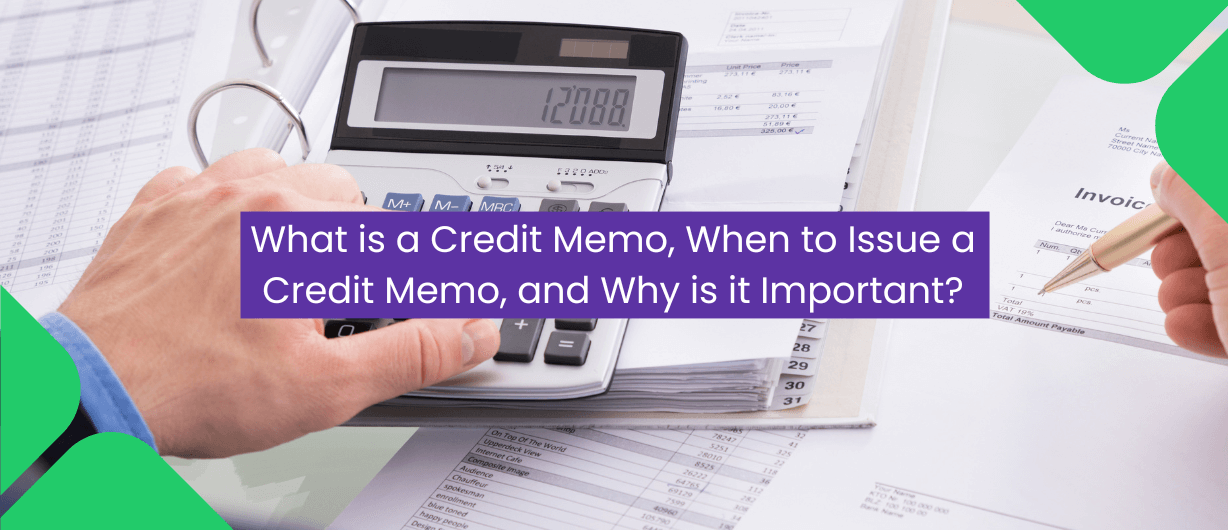June 13 2022 | By Wajiha Danish | 4 minutes Read

Business success depends largely upon how you tackle problems, complaints, and returns. No business is perfect, and sometimes, we all make mistakes; products get damaged, delayed, and returned. At such times, it is pivotal for a business owner to make amends and compensate the clients for the trouble caused. That is where credit memorandums come into play. They help business owners factor in the returned purchases accountably.
A credit memo is a simple document a business owner or seller sends to the buyers with a reduced or compensated amount. Besides the revised amount, it entails why the compensation was offered, which is an integral bit of information to keep.
Imagine what will happen if you enter a damaged or compensated sale into the books without a credit memo. It would become difficult to understand why the sale is made at a reduced amount and will cause discrepancies in the books.
In contrast, a credit memo helps you enter damaged or compensated sales the right way and entails the reason for compensation, so no confusions arise on the reconciliation day.
A credit memo not sent to the buyers and kept only for internal record keeping is called an internal record memo. Like the other one, its significance from an accounting standpoint is high, and it helps business owners keep accurate books at the day end.
An internal credit memo comes into play when you need to justify an outstanding receivable balance in your financial statement. It’s an invoice-like document that entails all the details the usual credit memo does.
A credit memo usually entails the original (Purchase Order) PO number, terms of service, the list of items, shipping details, date of purchase, price, quantity, and revised amount. These little bits of information help loads when it comes to record-keeping and enables the business owner to maintain records correctly. Not to forget, it also includes the reason for compensation, so no mix-ups occur later.
1. The buyer rejected the service or returned the goods.
2. The original price on the invoice is inaccurate.
3. Delivery of damaged, defective, or faulty goods.
4. A customer paid extra on the original invoice.
No business owner likes to see their product get returned for any reason whatsoever, be it defective material, incomplete delivery, wrong item, or anything else. However, it’s part and parcel of running a business and even helps you get to know your customers better.
A missed opportunity is a chance to make a lasting impression by making amends and compensating the client for a not-so-uncommon slip-up. As said before, a credit memo is a document that helps make accounting simple.
A credit is an adjustment to receivables and revenue and helps business owners balance the two and keep discrepancies at a minimum. Let’s say your company sold a product of the value of $1,000 to a client on March 15, 2022. The customer claims that the product was defective and returned $500 worth of product to you on March 29, 2022.
Here the financial statement needs to include both the original entry and after credit memo accounts receivable, that is $500 in this case on a sale of product worth $1000. Thus, a credit memo helps leave an audit trail that makes bookkeeping simple and helps maintain records precisely.
Every credit offered or incomplete sale directly impacts the bottom line. When the product is unrestorable, your company suffers a direct loss. So, it is pivotal to ensure every such incident enters the books with a proper audit trail.
See Also: What Is Cash Flow Formula And How To Calculate It?
The more credit memos your business offers, the greater the effect on the bottom line, indicating your business is struggling to deliver quality services and losing revenue.
– Credit memos enable business owners to maintain a proper audit trail and simplify accounting.
– Every credit memo impacts the bottom line, and it is essential to deliver high-quality services, so there’s no need to issue a credit memo.
– A credit memo gives you a chance to reflect and better understand your business and clients. It is a metric to assess the quality of services being delivered and identify the areas for improvement.
– They help business owners maintain proper and accurate books, free from discrepancies and errors.
Subscribe for business tips, tax updates, financial fundamentals and more.
MORE BLOGS

If you’re a small business, we will absolutely get it if you say you’re having a hard time choosing a payment platform for your company. And […]
Learn More →
When it comes to accounting, businesses often face a confusing question: which accounting method should we adopt? The choice typically boils down to the cash basis […]
Learn More →
Driving for Uber or delivering with Uber Eats can be a flexible and rewarding way to earn money. But when tax season rolls around, many drivers […]
Learn More →